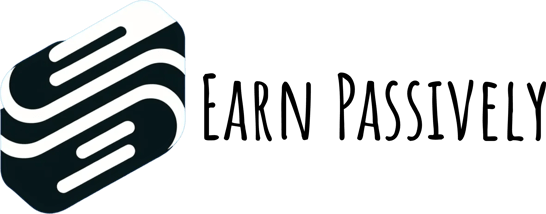How to Build a Successful Blog: A Comprehensive Guide
Creating a successful blog is a rewarding endeavor that combines creativity, strategic planning, and consistent effort. Whether you're passionate about sharing your knowledge or looking to generate income, a well-crafted blog can serve as a platform to connect with a global audience. Here's a step-by-step guide to help you build a blog that stands out.
1. Define Your Niche and Target Audience
A clear niche helps your blog stay focused and attract a dedicated audience. Think about topics you’re genuinely excited about. Your enthusiasm will keep you motivated and resonate with readers. Use tools like Google Trends, forums, and social media to understand what your potential readers are searching for. Look at what competitors are doing and identify areas where you can provide a unique perspective or value. Create sample content and gather feedback from friends, forums, or small online communities to validate your niche.
For example, instead of starting a general fitness blog, you could focus on fitness for new parents or remote workers.
2. Choose a Memorable Blog Name and Domain
Your blog name is often the first impression and a key part of your branding. Use keyword tools or free association to generate potential names. Use platforms like Namecheap or GoDaddy to see if your desired domain name is available. Ensure the name is easy to spell, pronounce, and remember. Reflect your niche and target audience in the name to convey clarity. Think long-term and choose a name that aligns with your goals and tone.
3. Select the Right Blogging Platform
The platform you choose determines the ease of managing your blog and the features available.
Popular Options:
WordPress.org: Ideal for those who want full control and customization. It’s free but requires hosting.
Wix, Hostinger, or Squarespace: Best for beginners seeking a user-friendly experience with professional designs.
Medium: Great for writers focused purely on content without worrying about technicalities.
Consider your technical skills and willingness to learn. Think about your long-term goals, such as monetization or scalability. Review the costs and limitations of each platform.


4. Invest in Reliable Hosting and Website Design
Fast loading times and a visually appealing design improve user experience.
Look for options like Bluehost, SiteGround, or HostGator that offer good uptime and support. Themes like Astra or GeneratePress are optimized for speed and flexibility. Ensure your website is responsive and looks great on all devices. Use clear menus and categories to help readers find what they’re looking for. Use consistent fonts, colors, and logos to create a cohesive look.
5. Develop High-Quality Content
Content is the heart of your blog. High-quality posts build trust and drive traffic.
Create an editorial calendar to maintain a consistent posting schedule. Write posts that solve problems, answer questions, or entertain your audience. Break your content into sections with clear headings and subheadings. Add images, infographics, or videos to make your posts more engaging. Proofread for grammar, clarity, and formatting to ensure professionalism.


6. Master SEO Basics
Search Engine Optimization (SEO) helps your blog rank higher in search engine results, driving organic traffic.
Use tools like Google Keyword Planner, SEMrush, or Ahrefs to find relevant terms. Ensure your titles, headings, meta descriptions, and URLs include keywords naturally. Connect related posts on your blog to improve navigation and SEO. Reach out to other bloggers or websites to link to your content. Improve site speed, mobile responsiveness, and overall usability.
7. Promote Your Blog Effectively
Marketing is essential to reaching and growing your audience.
Share your posts on platforms like Facebook, Instagram, Pinterest, or Twitter, depending on your niche. Join forums, Facebook groups, or Reddit threads relevant to your topics and provide value. Use tools like Mailchimp or ConvertKit to collect email subscribers and send regular updates. Write guest posts, participate in interviews, or co-host events with fellow bloggers. Consider running paid campaigns on platforms like Google Ads or social media to boost visibility.


8. Monetize Your Blog
Monetization helps turn your passion into a source of income. Platforms like Google AdSense allow you to earn from display ads. Partner with companies to recommend their products and earn a commission for sales. Work with brands to create posts or reviews in exchange for payment. Create eBooks, courses, or merchandise tailored to your audience. Offer consulting, coaching, or freelance work related to your niche.
9. Engage with Your Audience
Building a community fosters loyalty and repeat visits. Reply to comments, emails, and messages promptly and thoughtfully. Ask questions, run polls, or create challenges to involve your readers. Thank your readers for their support and celebrate milestones with them. Offer special posts or perks for loyal followers, like members-only newsletters or free resources.
10. Track Performance and Adjust Strategies
Regular analysis helps you identify what's working and what needs improvement. Google Analytics, SEMrush, or other platforms can provide insights into traffic, audience behavior, and popular content. Track metrics like page views, email subscribers, or social media engagement to measure success. Test different types of content, posting schedules, or promotional strategies to see what resonates. Follow industry news and trends to adapt your approach to changes in technology or reader preferences.
Common Pitfalls to Avoid
Inconsistent Posting: Regular updates keep your audience engaged.
Ignoring SEO: Even great content can remain unseen without proper optimization.
Overloading with Ads: Too many ads can detract from user experience.
Neglecting Mobile Users: A significant portion of readers access blogs via mobile devices.
Final Thoughts
Building a successful blog is a journey that requires patience, dedication, and a willingness to learn. By focusing on delivering value to your audience, staying consistent, and adapting to changing trends, your blog can grow into a powerful platform that achieves your goals—whether personal, professional, or financial.
Start today, and watch your blogging dream take flight!
Checkout our latest blog articles
Mission
Our mission is to make launching an online business effortless by providing you with the right information to help you start earning passive income.
contact@earnpassively.com
© 2024. All rights reserved.
Links included in this description may be affiliate links. If you purchase products using the links included I may receive a commission however, there is NO additional charge to you. Also, I am not a financial advisor nor am I a psychologist, I share information that I have used successfully or that others that I am aware of have used. If you opt to use anything that I share you do so at your own risk and you take full responsibility for the outcome. Any advice and information shared on my blog is general only and is being shared without taking into account your particular circumstances and needs. Before acting on any advice shared you should assess or seek advice on whether it is appropriate for your needs, financial situation and investment objectives.
